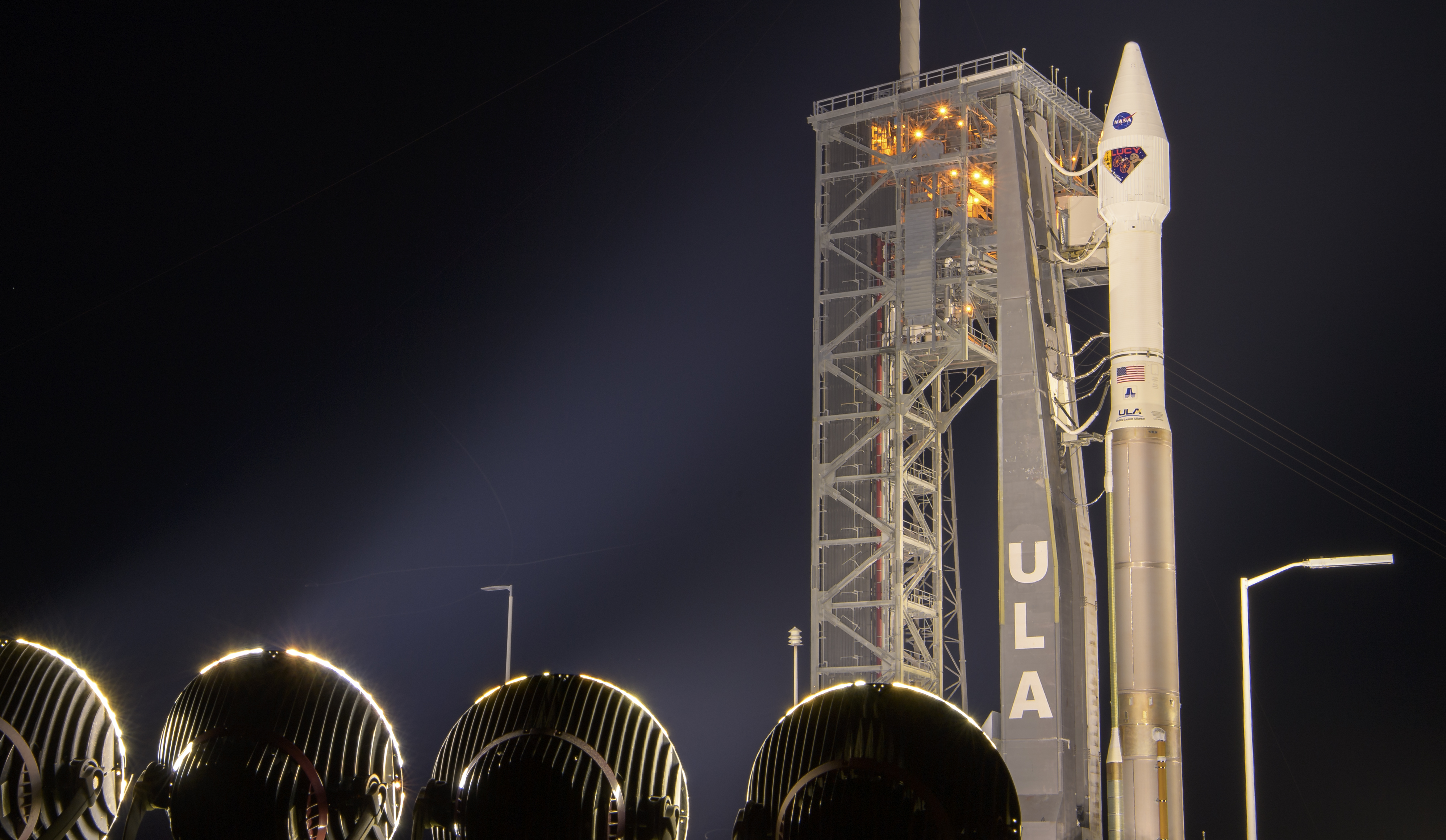This NASA spacecraft is on its way to Jupiter’s mysterious asteroid swarms
The spacecraft named Lucy is just starting its 12-year journey to see what asteroid clusters can teach us about the early solar system.

NASA’s Lucy spacecraft, named for an early human ancestor whose skeleton provided insights into our species’ muddled origins, has begun the first leg of its 12-year journey to help us better understand our solar system's ancient origins.
After lifting off from Cape Canaveral early Saturday morning on an Atlas V rocket, Lucy is now headed to study asteroids in an area around Jupiter that’s been relatively unchanged since the formation of the solar system some 4.6 billion years ago.
“Lucy will profoundly change our understanding of planetary evolution in our solar system,” Adriana Ocampo, a Lucy program executive at NASA, said during a science media briefing held on October 14.
The spacecraft is propelled primarily by liquid fuel, but its instruments will run on power generated by two huge solar arrays. Lucy’s technology builds on previous missions like the Mars Odyssey orbiter and InSight lander and the OSIRIS-REx spacecraft.
Lucy’s mission is to fly by one asteroid in the jam-packed area that circles the sun between Mars and Jupiter—and then continue on to Jupiter's Trojans, two swarms of rocky bodies far past the asteroid belt. These asteroid swarms, which travel just ahead of and behind Jupiter as it orbits, are celestial remnants from the solar system’s earliest days.
Lucy will take black-and-white and color images, and use a diamond beam splitter to shine far-infrared light at the asteroids to take their temperature and make maps of their surface. It will also collect other measurements as it flies by. This data could help scientists understand how the planets may have formed.
Sarah Dodson-Robinson, an associate professor of physics and astronomy at the University of Delaware, says Lucy could offer a definitive time line for not only when the planets originally formed, but where.
“If you can nail down when the Trojan asteroids formed, then you have some information about when did Jupiter form, and can start asking questions like ‘Where did Jupiter go in the solar system?’” she says. “Because it wasn’t always where it is now. It’s moved around.”
To determine the asteroids’ ages, the spacecraft will search for surface craters that may be no bigger than a football field.
“[The Trojans] haven’t had nearly as much colliding and breaking as some of the other asteroids that are nearer to us,” says Dodson-Robinson. “We’re potentially getting a look at some of these asteroids like they were shortly after they formed.”
On its 4-billion-mile journey, Lucy will receive three gravity assists from Earth, which will involve using the planet’s gravitational force to change the spacecraft’s trajectory without depleting its resources. Coralie Adam, deputy navigation team chief for the Lucy mission, says each push will increase the spacecraft’s velocity from 200 miles per hour to over 11,000 mph.
“If not for this Earth gravity assist, it would take five times the amount of fuel—or three metric tons—to reach Lucy’s target, which would make the mission unfeasible,” said Adam during an engineering media briefing also held on October 14.
Lucy’s mission is slated to end in 2033, but some NASA officials already feel confident that the spacecraft will last far longer. “There will be a good amount of fuel left onboard,” said Adam. “After the final encounter with the binary asteroids, as long as the spacecraft is healthy, we plan to propose to NASA to do an extended mission and explore more Trojans.”
Correction: We updated the age of the Trojans and clarified their relationship to Jupiter.
Deep Dive
Space
How to safely watch and photograph the total solar eclipse
The solar eclipse this Monday, April 8, will be visible to millions. Here’s how to make the most of your experience.
The great commercial takeover of low Earth orbit
Axiom Space and other companies are betting they can build private structures to replace the International Space Station.
The race to fix space-weather forecasting before next big solar storm hits
Solar activity can knock satellites off track, raising the risk of collisions. Scientists are hoping improved atmospheric models will help.
Stay connected
Get the latest updates from
MIT Technology Review
Discover special offers, top stories, upcoming events, and more.